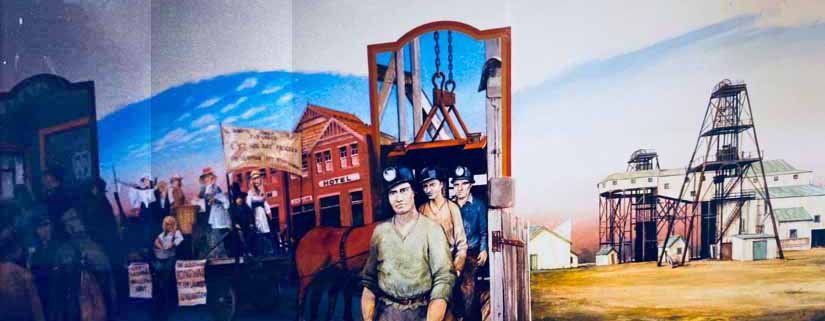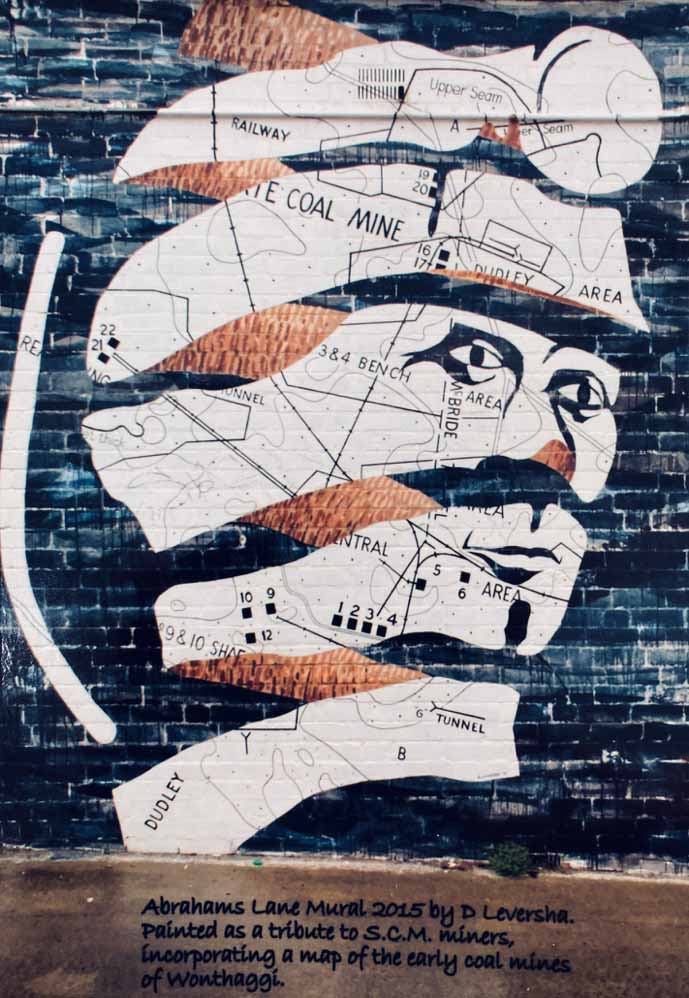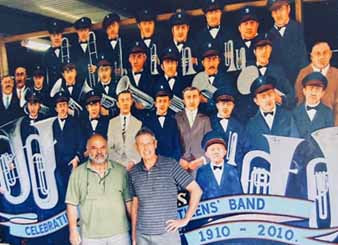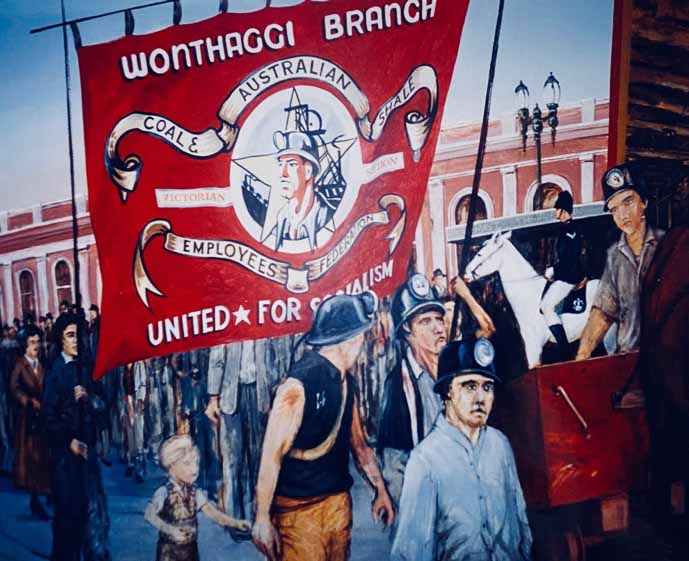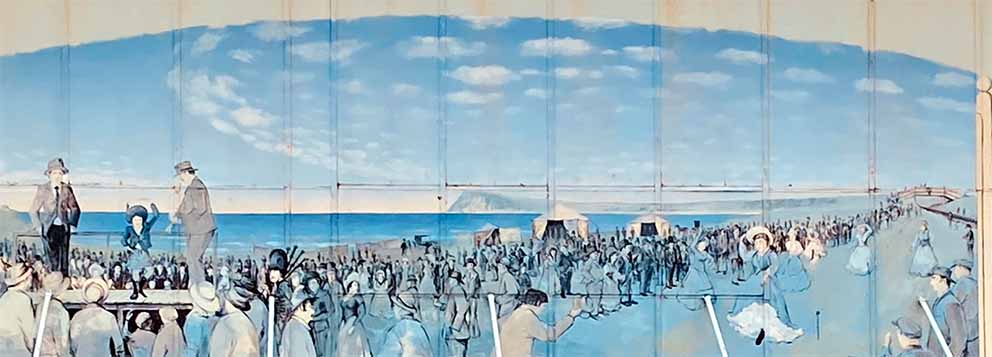IN 2006 after renovation of the Wonthaggi Railway Station was painstakingly completed over several years, the Wonthaggi Historical Society was finally able to return to permanently inhabit where it had been located since the 1980s. It was then that Irene Williams enlisted Dennis Leversha along with his wife, Bev, to help her (and many other dedicated WHS members) organise the displays for the new museum.
When I first joined the Historical Society in that same year – 2006 – and began writing the PLOD Essays once a month, I witnessed the energy put in by the Levershas in arranging displays and also in figuring out ways to take the displays on tours.
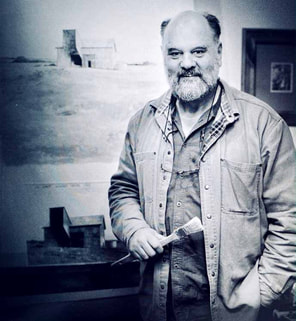 Dennis Leversha
Dennis Leversha However, it wasn’t until Dennis gave a talk to the Historical Society three months ago that I realised the extent of Dennis’s endeavour in creating public art throughout the town as a record of our extraordinary history. And it was because of his talk that I began to understand why he, of all the talented artists in our area, best understood how to paint the extraordinary murals that tell our history.
Dennis was born in February 1945 in Castlemaine in central Victoria, where his parents had an apple and pear orchard. He attended Castlemaine Tech, followed by Melbourne Tech (now RMIT) where he completed a four-year diploma in art (painting). He had a studentship. , which meant he had to teach for a certain amount of time once he qualified.
“I think they [the State] paid us 15 quid a week and you could survive on that back then in the `60s. Your entertainment was basically a sleeping bag and a bottle [or flagon] of red and a party here or there. You’d hitchhike around.”
Once he finished his four years at the Tech, Dennis had to do a two-year industrial apprenticeship as part of his course. He was assigned to work at Neon Electrics in South Melbourne. “They had an art department that consisted of three or four young blokes who used to sit with the salesmen and draw up ideas for signs that the customers wanted, or else we would go around with the salesmen to different shops spruiking for business by convincing the owner of a milk bar, for instance, that a flashing neon sign or a sign for tobacco with smoke billowing out of it would help their business.”
They weren’t all mundane jobs. He remembers a sign with the horns of a bull and flashing eyes. He did the artwork for the old CUB (Carlton United Brewery) logos in brown and light blue in about 1965. “The very first one of those signs was erected at the Echuca pub and so I got home for the weekend and saw my sign go up.” He worked on another huge sign about Flick Pest Control. The slogan was One flick and they’re gone. The wording on the sign turned out to look fairly risqué and it didn’t last long.
“After I completed my apprenticeship, I went hay carting in Sale! And then I went to teachers’ college as the final step for the Studentship. I married Bev. We were both assigned schools in Swan Hill, which turned out to be very good. When we started a family we transferred to Maffra and then I taught at Sale before I applied for the job in Wonthaggi, where I officially replaced Jill Miles’ dad.”
During his time teaching art in Sale he entered the Sale Art Prize with a painting of the Longford gas plant, which was an environmental issue at the time. “I did a huge 8x4ft painting and entered it in the Show sponsored by ESSO and we turned up for the opening when one of the other teachers came rushing up to me and said, ‘I think you’ve got it!’ But I missed out because it was fairly controversial. Anyway, it ended up in Wonthaggi in our passageway for months.”
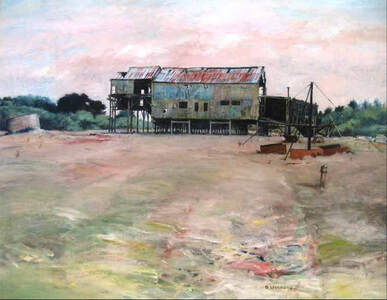 Number 5 Brace, by Dennis Leversha
Number 5 Brace, by Dennis Leversha His first mural was on a Mirboo North café, where he embedded an old wagon on the front wall and painted a picture on the wall around it. Since then he’s painted about 35 murals.
“Keeping scale of something that big is all about proportion. Normally, I have to pick a horizon line on the wall and then things begin to fall into place. With a lot of the modern murals, the horizon line does not exist, perhaps because they are not telling a story.
“The mural I am most proud of is the one that nobody sees in the Workmen’s. I did it in 1996. Shortly after it was finished, they changed the entrance to the club and no one sees it now. It was a series of specific events arranged chronologically from the beginning through to Kirrak. They tried to photograph it, but on the other hand the entrance they came up with by Colin Suggett, that’s pretty good. Colin and I have worked together from time to time.
